While the Bordeaux 2022 en primeur campaign is yet to kick off in full swing – with just a handful of key releases entering the market over the past three weeks – Wine Lister’s partner critics’ scores are now in (Antonio Galloni and Neal Martin from Vinous, Jancis Robinson, Bettane+Desseauve, and Le Figaro Vin) informing our overarching 100-point Wine Lister score. The WL score is the average score of our five partner critics, normalised to take into account each critic’s scale and scoring habits.
In our latest blog, we examine the wines that gain the top Wine Lister scores in 2022 – a vintage that, despite extreme weather conditions, is projected to be one of the best from this century (recap Ella Lister’s vintage report here).
The top 30 wines of the vintage are shown below, with all estates in this ranking boasting scores of 96 or above. Scores are shown to one decimal place to enable a detailed ranking within the top scorers.
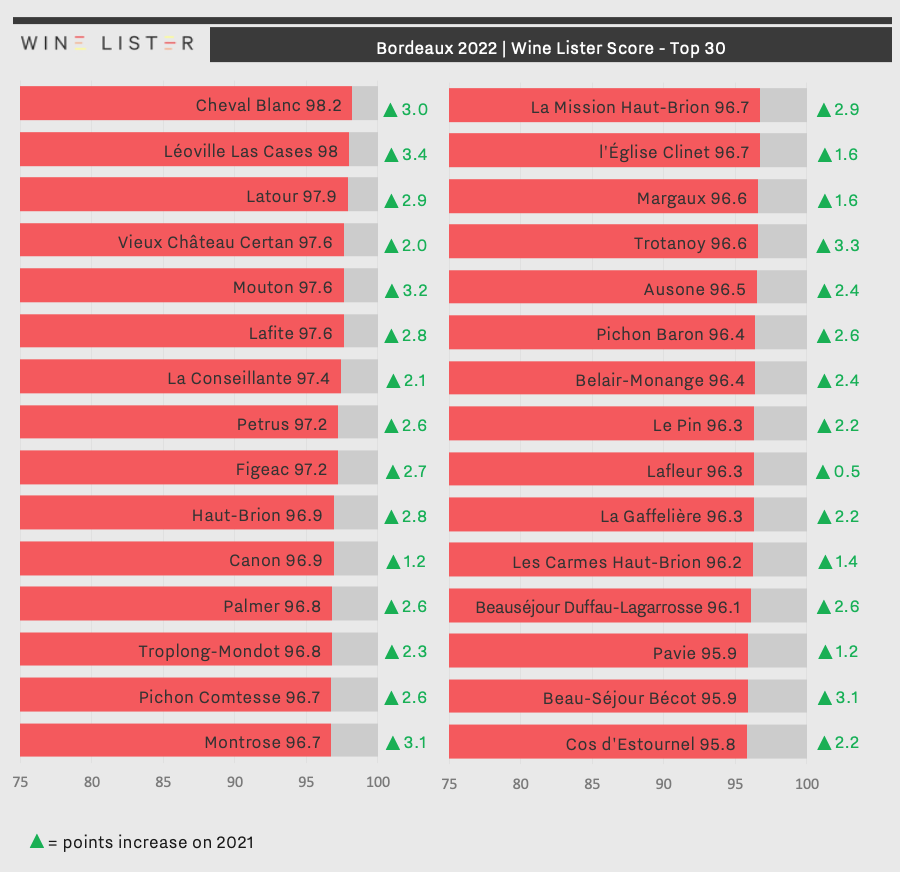
The 30 wines with the highest WL scores, including their points increase versus 2021
Reflecting trade and press sentiment regarding the exceptional quality of the 2022s, wines across the board have generally seen their WL scores increase on last year, and in some cases, significantly. This year, 64 wines achieve WL scores of 95 and over, more than double the number in 2021 (29). While the estates that made up our top 30 last year had an average score of 95.2, this year’s top 30 average 96.8 points.
A glaring observation: only red wines have scored above 96 in 2022 – the vintage having been kinder to Merlots and Cabernets than to their white counterparts, which struggled to maintain acidity in the heat. Only six whites – predominantly sweet wines from Sauternes and Barsac – scored just outside the examined range, with WL scores of around 95. These include – in descending order – Climens, Suduiraut, Doisy-Daëne L’Extravagant de Doisy (last year’s top-scoring wine, with 97 points in 2021), Rayne-Vigneau, La Mission Haut-Brion Blanc (the only dry white), and Fargues.
Turning to reds, Cheval Blanc stands at the top of the podium (up 3 points on 2021), followed by Léoville Las Cases (up 3.4 points), Latour (up 2.9 points), Vieux Château Certan (up 2 points), Mouton-Rothschild (up 3.2 points), and Lafite Rothschild (up 2 points), which all boast rounded scores of 98. They are closely tailed by La Conseillante (up 2.1 points), Petrus (up 2.7 points), and Figeac (up 2.6 points), amongst others.
The biggest climbers in the top 30 this year were Léoville Las Cases, with a WL score increase of 3.4 since the 2021, followed by Trotanoy with 3.3, Mouton-Rothschild with 3.2, La Mission Haut-Brion and Beau-Séjour Bécot with 3.1 points. On average, these 30 estates saw an increase of 2.4 points compared to 2021.
Right Bank estates take up the majority of places in this year’s top-30 list (56% compared to 45% in 2021). This is mainly thanks to 10 Saint-Émilion properties and their limestone terroirs featuring in the top 30 – exactly one third – versus 24% last year, whereas Pomerol’s representation is similar year-on-year (23% versus 21%). Other appellations featuring ore strongly in the top 30 are Pauillac (17% up from 14%), and Margaux and Saint-Estèphe (both 7% up from 3%), while Pessac-Léognan and Saint-Julien have seen their listings reduce (10% versus 17%; 5% versus 7%, respectively).
Owner and winemaker of her iconic family estate in Condrieu: “A wine is like its maker”.
The 15th in Le Figaro Vin’s series finds us in the northern part of the Rhône Valley where Christine Vernay, #36, has made her distinctive mark in the 25 years since she took over from her father, Georges Vernay.

From its home in Condrieu, Domaine Georges Vernay’s 24 hectares of vines, mainly comprised of Syrah and Viognier, extend over steep, precipitous terroirs. Georges Vernay began to develop the estate in 1953, starting out with 1.5 hectares of vines classified as AOC Condrieu Coteau de Vernon. A passionate defender of the appellation, he played a major part in its preservation.
As the third-generation owner of the family property, Christine Vernay, joined in 2020 by her daughter Emma Amsellem, maintains the family’s knowledge and expertise. Today they cultivate 10 hectares of vines classified as AOC Condrieu, including three hectares of old vines which produce the prestigious Le Coteau de Vernon and Les Chaillées de l’Enfer, wines which epitomise the Viognier grape variety in Condrieu. They also grow six hectares of vines classified as Côte-Rôtie, two hectares as Saint-Joseph, and six hectares as IGP Syrah and Viognier.
Le Figaro Vin: How does it feel to be crowned a winemaking champion?
Christine Vernay: A champion? I have never thought about it in those terms. It surprises me, but I am delighted by it.
Have you been training for long?
It has been a real marathon…nearly 30 years now.
Who is your mentor?
There have been quite a few. In the first place my family, then numerous encounters in the world of wine with men and women who have inspired me.
Is wine a team sport?
Of course. How could anyone think otherwise. Wine starts its life on the vine and our hillsides require so much attention that you need a strong team to manage successfully. Everyone plays their part. When the grapes reach the cellar I have a smaller team around me, it’s more intimate, I work more on my own, and I engage in a real one-to-one conversation with my wines.
What is the key to making a good wine? The terroir or the winemaker?
Without question, the terroir. For me the terroir is a wonderful confluence of place, vine, and winemaker. You then have the freedom of interpretation to make a great wine.
To what do you owe your success?
For a winemaker the definition of success changes every year. My awareness of its transient nature stimulates and strengthens me. I believe that desire, pleasure, doubts, convictions, and, above all, commitment to inherited values are all key to progress and success.
Is your family proud of you?
I hope so!
Who is your biggest supporter?
I don’t have any.
Your favourite colour?
Red – the red of Maison Rouge.
Your favourite wine?
My heart swings between Coteau de Vernon and Maison Rouge.
Your favourite vintage?
1997, my first vintage.
If your wine was a person, who would it be?
It would be me. I often find that a wine is like its maker.
What are the best circumstances in which to taste your wine?
My favourite circumstances for tasting it are when you are tuned in to the sensations that it can bring you.
Have you ever thought about chemically enhancing yourself, or your wine?
Our reciprocal energies are enough in themselves.
For what price would you be prepared to sell your estate?
I am not prepared to sell it.
Who is your strongest competition?
Nature, which you have to contend with all the time.
Which competition do you dread the most?
At the beginning of the harvest, when you are walking through the vines, tasting the grapes, keeping a watchful eye on the earth and the sky, and deciding when to press start, you experience a powerful adrenaline rush. I dread it, but I love it.
What is your greatest trophy?
The smile and serenity of my father watching me be a winemaker.
What has been your most innovative strategy in the vineyard and in the cellar?
Commitment to a way of working that respects the environment and having the flexibility to be as close as possible to the vines, the grapes, and the wine, contingent on the demands of nature, the vintage, the weather…
Who would be your ideal successor on the podium?
My daughter!
Tasting for Le Figaro, Ella Lister and her colleague, Béatrice Delamotte, spent a fortnight in Bordeaux tasting 600 wines en primeur from the extraordinary 2022 vintage – extraordinary in terms of its textures, its accessibility, and its unexpected freshness in such a dry, hot year – that has produced wines with technically high levels of tannin which somehow just melt into the background. We tasted many of the wines together, and sometimes two or three times in order to be able to judge each sample as faithfully as possible.
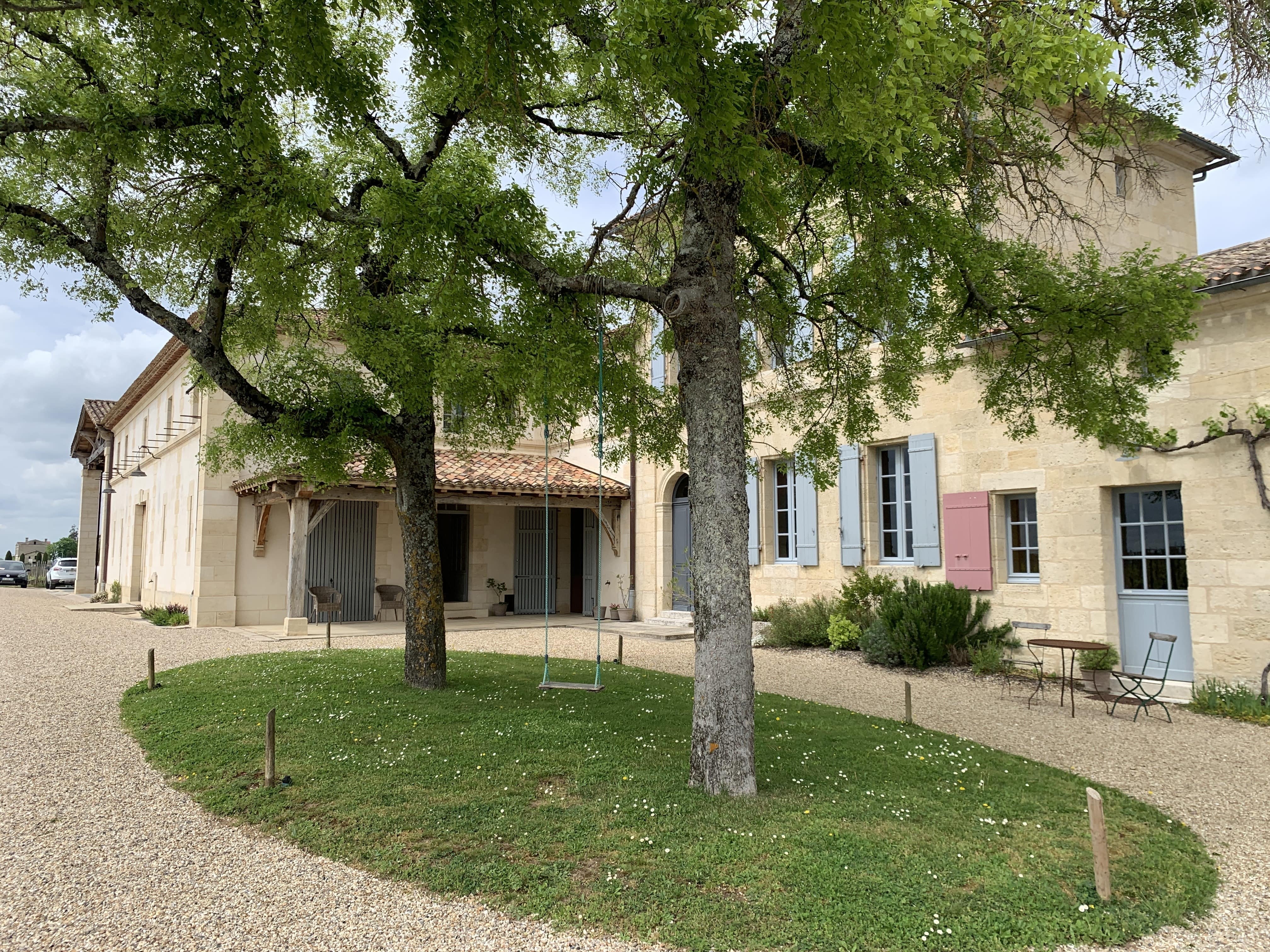
Château Lafleur
The Vintage
After a difficult 2021 vintage, 2022 is without doubt a contender for the vintage of the century – so far –, showing signs at this early stage of outdoing the magnificent triptych 2018, 2019, and 2020, and will perhaps go down in history as the 1982 has done. After almost 20 years as Technical Director at Château Cos d’Estournel, Dominique Arangoïts expressed this in slightly different words, suggesting that 2022 “might be the wine of my life”.
And the most extraordinary thing is that nobody expected it. The vines were subjected to some of the driest conditions on record, as well as above-average temperatures. However, there were no extreme heatwaves (as in 2003), and night-time temperatures remained relatively cool, dropping on average to around 15°c. The vines grew accustomed to the hot, dry conditions early in the growing season, which meant they adapted their consumption and their canopy growth in order to cope with what little water they had, making do with reserves amassed during a rainy 2021, then a top-up in June, and then surviving 50 dry days until mid-August. Refuting any comparison with 2003, Nicolas Audebert, Managing Director of Châteaux Canon and Rauzan-Ségla, uses the analogy of an office worker being cooped up until August, and getting sunburnt going out into the bright sun for the first time, whereas 2022 was a more gradual acclimatisation for the vines.
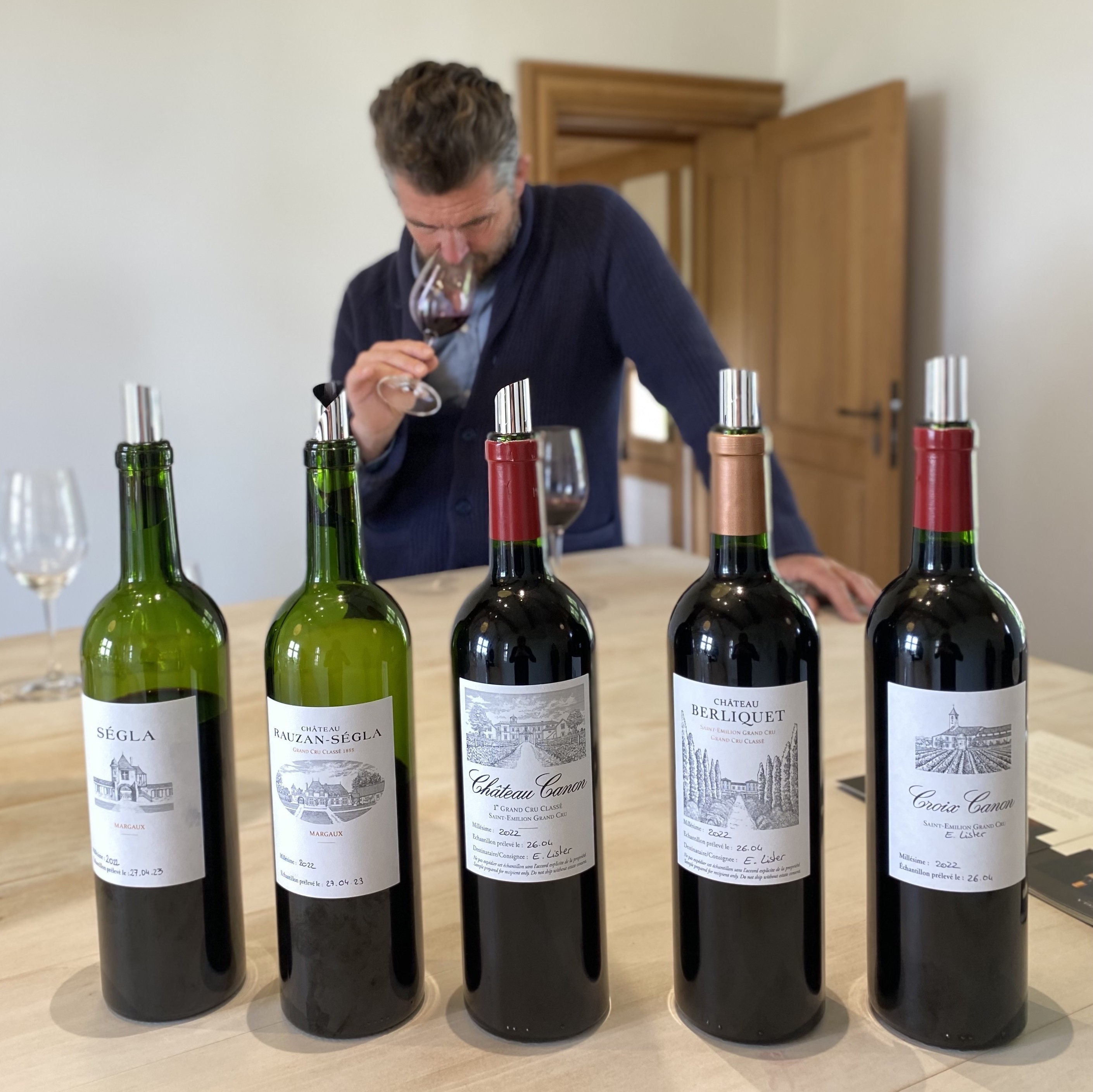
Nicolas Audebert, Managing Director of Châteaux Canon, Rauzan-Ségla and Berliquet
One of the buzzwords of the vintage, cited over and over again in our conversations with owners, winemakers, and consultants in the region was ‘resilience’. “ The vines, the soils, and the people were resilient,” said Omri Ram, Cellar Master and Head of Research and Development at Château Lafleur. That the vines survived the prolonged drought with relative ease and produced such stunning results was a shock to everyone, with many vignerons telling us they were more stressed than vines. Mathieu Cuvelier, owner of Clos Fourtet, found the experience quite stressful, even though “there was little that needed doing – no green harvesting, no de-leafing, very light vinification”. Pierre-Olivier Clouet, Technical Director at Château Cheval Blanc concurs, recounting “the vineyard made the wine all by itself”.
By early August the pips were already brown, i.e. phenolically ripe, “We had never witnessed that before” explains Frédéric Faye, the Managing Director of Château Figeac. However, the extreme weather conditions did leave room for mistakes for those were not attentive enough to picking dates or not gentle enough with their extraction. So 2022 wasn’t a vintage of homogenous quality, but overall, it was a pleasure to taste, and much easier for professional tasters than 2021, where we battled with oak, firm tannins, and biting acidity to assess potential quality. This year, the majority of wines are already so expressive and caressing as to be almost ready to drink, while possessing all the necessary attributes to age well.
“The wonderful thing this year is that every grape variety did rather well,” exclaimed Christian Seely, Managing Director of AXA Millésimes, parent company of Château Pichon Baron, explaining that while above all it’s a great Cabernet year, “the Merlots are as beautiful as they’ve ever been”. Many wines in 2022 featured a higher proportion of Merlot than usual, as the Cabernet berries were small and yielded less juice. In fact, 2022 sparked lots of positivity around Merlot, with Stéphanie de Boüard-Rivoal, co-owner of Château Angélus, commenting that the vintage shows “Merlot can exist long into the future”, contrary to recent concerns about its capacity to stand up to a warmer, drier climate.
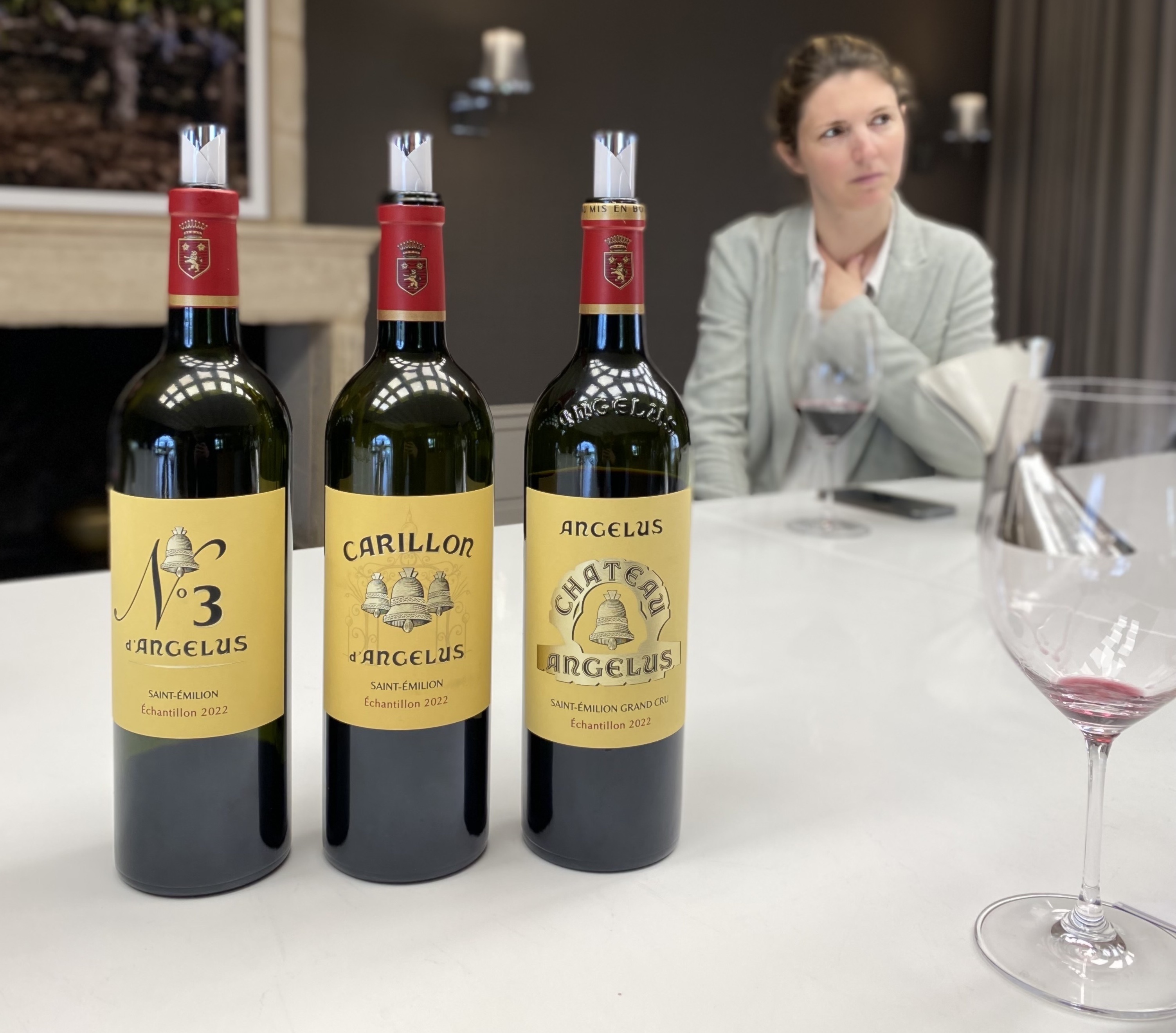
Stéphanie de Boüard-Rivoal, co-owner and CEO of Château Angélus
The Wine
The red wines – the unquestionable winners in 2022 – are dense and concentrated, yet fresh, fruity, floral, and sappy. Above all, the best wines display a range of magical textures from silk and cashmere to duckling feathers, and a common and delightful thread through many of the wines is a vegetal florality reminiscent of the sap of fresh cut flowers. The least successful wines present harsh tannins. The best ones, on the other hand, are so fresh and tender that you would never know they came from such a dry, hot vintage, nor guess the resulting high IPTs and low pHs.
The dry whites, however, found it harder to contend with the vintage, and the low acidity levels can be more apparent than in the red. There are, nonetheless, a handful of successful whites worth looking out for, which possess the best and subtlest exotic notes, a finesse and softness that counteract the richness of the vintage. The sweet wines are very good, if not incredible, rich with delicious botrytis flavours and very high residual sugar levels.
The 2022 vintage is not one with an obviously overperforming appellation or subregion. Left and Right Bank made astonishing wines, and we have been inspired by our tastings to bestow an unprecedented number of potential 100-point scores to the wines. You can discover all eight possibly “perfect” wines, and hundreds more, on the Wine Lister and Figaro Vin websites now.
Winemaker and Technical Director of the estate: “You have to give your soul to the wine”
The 14th interview in Le Figaro Vin’s series brings us back to Burgundy where Guillaume Marko, #37, creates exquisite wines at Domaine du Cellier aux Moines in the Côte Chalonnaise.
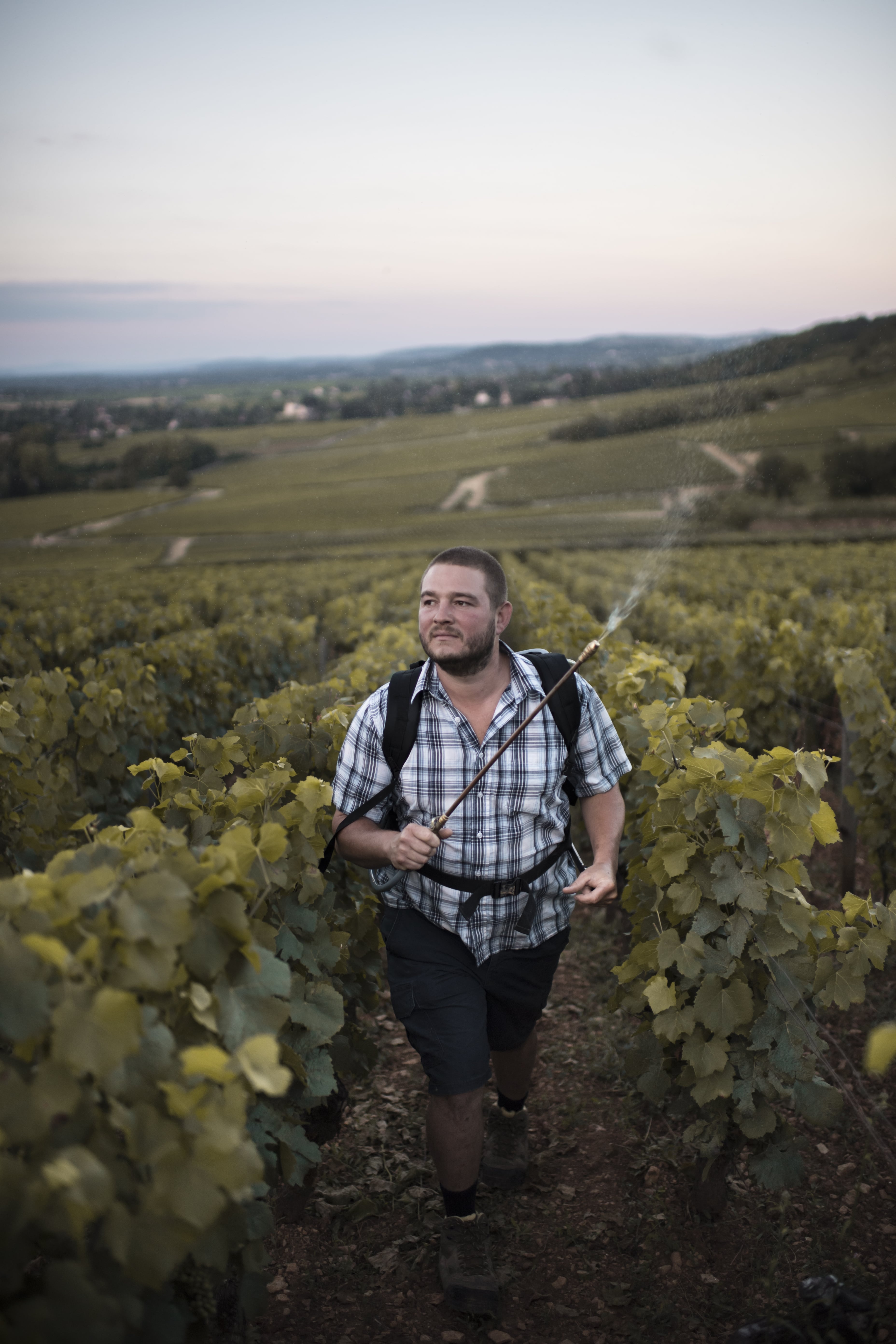
Situated on a hillside above Givry, the estate was founded circa 1130 by the Cistercian monks of La Ferté Abbey. Nearly 900 years later it stands as a witness to the history of Burgundian viticulture. The estate cultivates plots in some of the finest appellations in Burgundy, producing the following wines: Givry Premier Cru Clos du Cellier aux Moines, Mercurey les Margotons, Puligny-Montrachet Premier Cru Les Pucelles, Chassagne-Montrachet Premier Cru Les Chaumées, and Santenay Premier Cru Beauregard.
Since they took over the estate in 2004, Philippe and Christine Pascal have dedicated themselves to making Domaine du Cellier aux Moines one of the key benchmarks for Givry. Here, Cellar Master Guillaume Marko shares his experience as a winemaker.
Le Figaro Vin: How does it feel to be crowned a winemaking champion?
Guillaume Marko: It doesn’t mean a great deal, to be quite honest… What makes me happy is when a taster enjoys drinking my wine and is moved by it.
Have you been training for long?
For 15 years. And I learn something new every day.
Who is your mentor?
Mother Nature – she dictates the tempo. And, of course, my wife who is very patient…
Is wine a team sport?
Not everywhere, but it is with us. And it is so much better that way!
What is the key to making a good wine? The terroir or the winemaker?
The terroir, obviously, although the quality of the vines is of comparable importance. Without the right massal selection you will never get great wine. In a sense the winemaker is the conductor who listens to both these elements and sublimates them.
To what do you owe your success?
To the entire team, present and past, who work with such precision, day after day.
Is your family proud of you?
I hope so.
Your favourite colour?
Red.
The king of grape varieties?
Pinot Noir, obviously!
Your favourite wine?
Clos du Cellier aux Moines Les Dessus Givry Premier Cru.
Your favourite vintage?
2019.
If your wine was a person, who would it be?
It would certainly be me.
What are the best circumstances in which to taste your wine?
You need to remember to open it in advance and then taste it over a meal with friends and family.
Have you ever thought about chemically enhancing yourself, or your wine?
Not for one moment.
For what price would you be prepared to sell your estate?
Make me an offer…only joking!
Who is your strongest competition?
Hailstorms.
Which competitions do you dread the most?
The battle against mildew in years of high rainfall.
What is your greatest trophy?
This one…of course!
What has been your most innovative strategy in the vineyard and in the cellar?
Rediscovering how to listen, how to let go, and let nature take its course.
Who would be your ideal successor on the podium?
It could be any winemaker, provided that he or she gives their soul to the wine.
Second-generation owner and winemaker of her estate in Anjou: “The important thing is to feel alive”.
For the 13th interview in Le Figaro Vin’s series we remain in Savennières in the Loire to meet Tessa Laroche, #38. One of France’s greatest winemakers, hidden away in one of the country’s tiniest appellations, Savennières Roche aux Moines, she will celebrate 20 years at the helm of her estate in 2023.
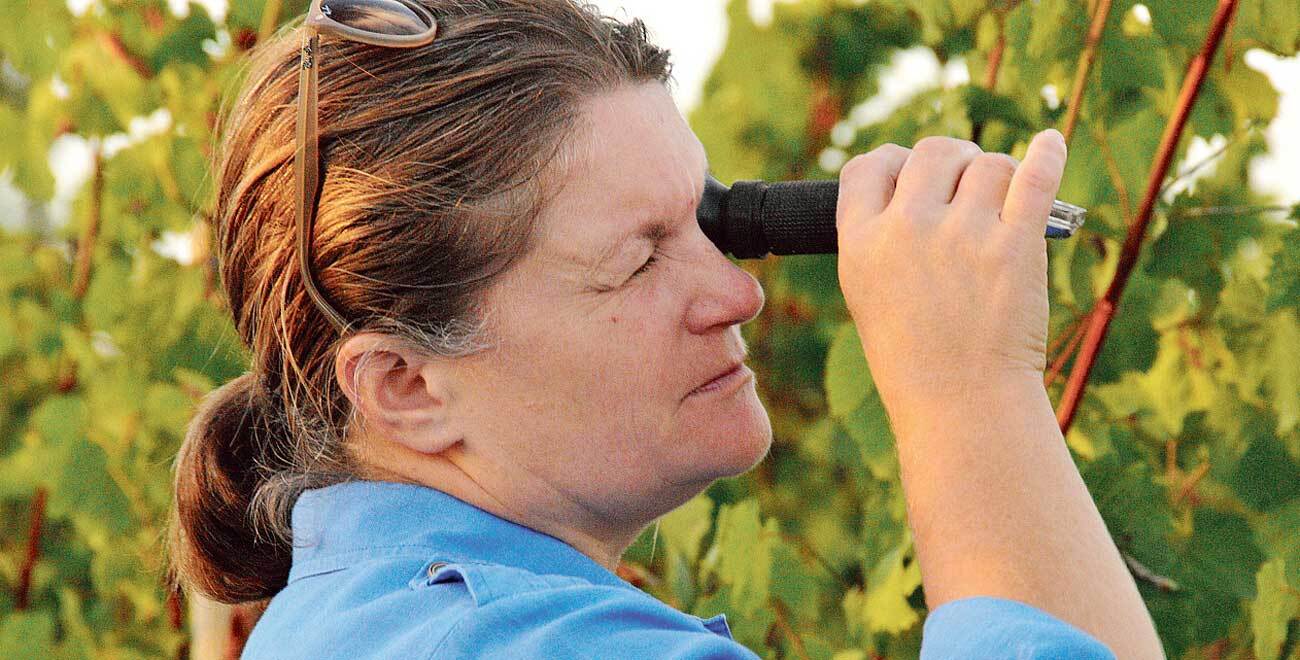
Her parents bought the property, whose wine-growing origins date back to the Middle Ages, in 1981. At that time the wine was still sold in barrels, not bottles. With each passing vintage they succeeded in converting the neighbourhood. Tessa’s mother, Monique Laroche, who passed away in 2020, was the driving force who played a major part in establishing the region’s viticultural reputation.
Her core operation remains the iconic wine of the estate, turning out between 30,000 and 40,000 bottles a year, but in recent years Tessa Laroche has branched out with a new wine, Le Berceau des Fées. This is made from young vines and matured in vats instead of barrels, while her reds, made from Cabernet Franc, display a vivacity rarely found elsewhere. Though her terroir remains her greatest love, not a day goes by without a glass of champagne. As she is fond of pointing out: “The important thing is to feel alive”.
Le Figaro Vin: How does it feel to be crowned a winemaking champion?
Tessa Laroche: I am not a champion, because it is impossible to go it alone. I am just a winemaker. I have a passion, I try to do the best that I possibly can, together with all the colleagues who work with me on the estate.
Who is your mentor?
My mother tops the list, but I would add Odilon de Varine, Charles-Emmanuel Girard, and Richard Leroy (respectively cellar master in Champagne, oenologist in the Loire Valley, and legendary winemaker in Anjou, ed.).
Is wine a team sport?
Yes, without a team you cannot function. There is always a captain, as in any sport or as there is on a ship. The prerequisites are that my team must enjoy food and wine, must have a good sense of humour, and must be happy. The wine we make is good and full of life, so we have to be in harmony!
What is the key to making a good wine? The terroir or the winemaker?
You cannot achieve the necessary level of complexity without the terroir. Without being a megalomaniac, I am lucky to have one of the finest terroirs in existence. That said, all of us are passionate about what we do and, no matter what, our love is reflected in the wine.
To what do you owe your success?
To this wonderful place, and to my parents, who came to establish themselves here. My team has been here for 15 years. Without them I would never have got this far.
The king of grape varieties?
Chenin. It is the best grape variety in the world, with its potential for total success or abject failure. You have to learn how to tame it, growing small yields and small bunches of grapes. But you can have so much fun with it, making sparkling wines, dry wines, sweet wines…you have to know how to manage it, rather like with a horse. If you give it its head it probably won’t be that good. Just now my preference is for dry wines, but the sweet wines are coming back into favour.
Your favourite wine?
Roche aux Moines 2001, my very first wine.
Your favourite vintage?
2019, which I like hugely right now, just like the 2017. But it’s constantly evolving.
If your wine was a person, who would it be?
Just like your dog, your wine takes on your appearance. My wine looks like joie de vivre because I try not to transfer my anxiety to it.
What are the best circumstances in which to taste your wine?
You should be relaxed, at the end of the morning, or after a productive day, sitting in the garden or in front of the fireplace.
Who is your strongest competition in the Loire?
For all of us here Richard Leroy is the master. We even call him God. He is always exchanging ideas, part of the conversation. He loves to share his knowledge. We have to remember that we are all just passing through and it is essential to engage with each other. There is a real solidarity in Anjou, and no one works in isolation. That is probably why the region attracts so many new establishments.
Have you ever thought about chemically enhancing yourself, or your wine?
No, that has never occurred to me. I don’t wear make-up, so why not keep my wine natural too?
Is your family proud of you?
We are siblings and everyone is delighted by the continuity of the estate.
What has been your most innovative strategy in the vineyard and in the cellar?
To get the best grapes depending on the vintage. You have to reinvent yourself every year. However, there is nothing more difficult if you are French!
Who would be your ideal successor on the podium?
God alone knows. I have six nephews and nieces. The choice has to be obvious and, above all, not put pressure on anyone. As things stand, I am in no hurry.
Owner of Domaine Belargus: “I have a bit of a PSG syndrome”.
Figaro Vin’s 39th top French winemaker, Ivan Massonnat creates sumptuous wines on Savennières’ exceptional terroir.
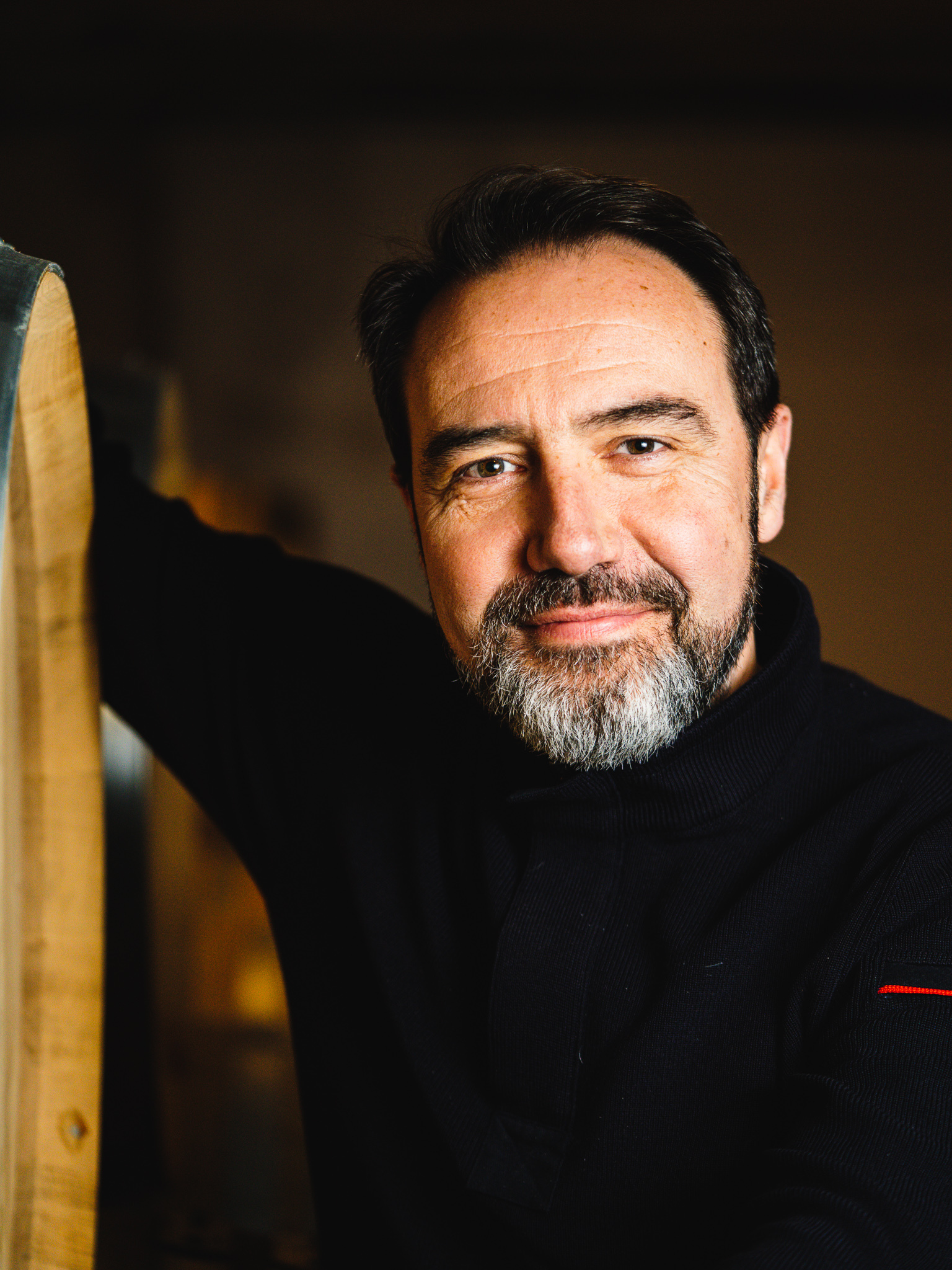
In the Loire valley, on one of Anjou noir’s finest terroirs, Ivan Massonnat is fulfilling his long-lasting dream of producing excellent Chenins from Savennières. At the Belargus estate, born in 2018 with the purchase of the Pithon-Paillé estate, 24 hectares of vines are biodynamically grown in a parcel-based approach inspired by the Burgundian “climates”. Named in tribute to the rare cuvée once made by Jo Pithon – the “Belargus des Treilles” – Belargus is also the name of a small blue butterfly that’s exceedingly rare at this latitude but can be found on the Coteau des Treilles terroir.
Le Figaro Vin. – How does it feel to be crowned a winemaking champion?
Ivan Massonnat. – I don’t consider myself to be a champion. One part of me feels like a wine amateur that’s made it and is living the dream, the other like a producer that makes his wine and takes decisions.
Have you been training for long?
Yes, since my childhood, without even realising it. My passion for vines stems from my grandfather’s vines, and I’ve trained by being in contact with real champions, of the Burgundian kind.
Who is your coach?
Jo Pithon, who’s been by my side every day throughout this adventure, with 40 vintages under his belt. I have a few other mentors, such as Thibault Liger-Belair and Philippe Pacalet in Burgundy. It’s by their side that I learnt to trust myself. There’s Pierre Amoreau from Château Le Puy, who taught me a lot. Among those who inspire me, there’s also Anselme Selosse. His approach goes far beyond that of a winemaker, he’s a true philosopher. At 45 years old, I completely changed my life, shifting towards a career I knew to be difficult. When I see a man like him, I know I’ve done the right thing.
Is wine a team sport?
Yes, definitely. I spend my time saying so. There are some people who are often cast aside, especially in the vineyard, but on my estate, it’s the opposite. You need great talent, with each individual excelling in their specialty. The members of my team are sharp and well-suited to their roles. I have the PSG syndrome; I don’t want people working in silos. If everyone isn’t aware of the whole, we cannot accomplish anything. Good ideas sometimes come from across the playing field. For me, the concept of a rugby team is the best model there is.
What is the key to making a good wine? The terroir or the winemaker?
I have a vision of making wine with a sense of place, and not all places are created equal. That being said, a good-for-nothing from the finest place will not make a great wine! I don’t believe that a winemaker is a magician.
To what or to who do you owe your success?
To all those who believed in me, my closest circle, who didn’t view my project as a pipe dream. There are also those who told my story, as well as the clients. No project can bring people together the way wine does. Each link in the chain has been important. I never imagined things would happen so fast, and the seeds would take root.
Is your family proud of you?
Yes, and very happy for me. My family has made a lot of sacrifices, but it was worth it in the end.
Your favourite colour?
I started with reds, but today I like whites just as much.
The king of grape varieties?
Chenin! It has a lot of character and concentrates a lot of different traits.
Your favourite wine?
The Coteau des Treilles, which I just call Les Treilles.
Your favourite vintage?
Probably 1989, for the reds. It’s the one I’ve had the most opportunities to enjoy.
If your wine were a person, who would they be?
Me. A profound part of a winemaker’s personality finds its way into the wine they make.
What’s the best way to enjoy it?
In good company.
Have you already thought about chemically enhancing yourself, or your wine?
No.
If you had to put a price on your estate, what would it be?
I’m not planning to. This is a 100-year project, and I don’t know what value it will have in a century’s time!
Who is your strongest competition in Anjou?
I don’t view competition that way, nor do I consider my neighbours as opponents. What impresses me is team play. My adversary could be the beer or alcohol-free drinks industries. When I see people with a waning interest in wine, I feel like we’ve missed the boat somewhere along the line.
What has been your most innovative strategy in the vineyard and in the cellar?
My most innovative idea in the region was to break the glass ceiling. What has defined Belargus is the conviction that this region produces some of France’s finest white wines and that they shouldn’t be sold at a discount. It was a risk, but in line with what I was doing. Les Treilles has been the proof of this: a 100 euro-wine from Anjou. This was completely unheard of.
Who would be your ideal successor on the podium?
I don’t know yet. I don’t want to impose this on my children. Nevertheless, one thing is certain: I will not last forever. What will remain is the terroir. My only wish is that my successor be passionate.
Owner and winemaker of Château La Calisse: “You have to be tuned in to your terroir”.
The 11th in Le Figaro Vin’s series brings us back to Provence where Patricia Ortelli, #40, creates her exquisite organic wines. Here she shares her vision and her deep love for her vocation, which she has pursued for the last 30 years. 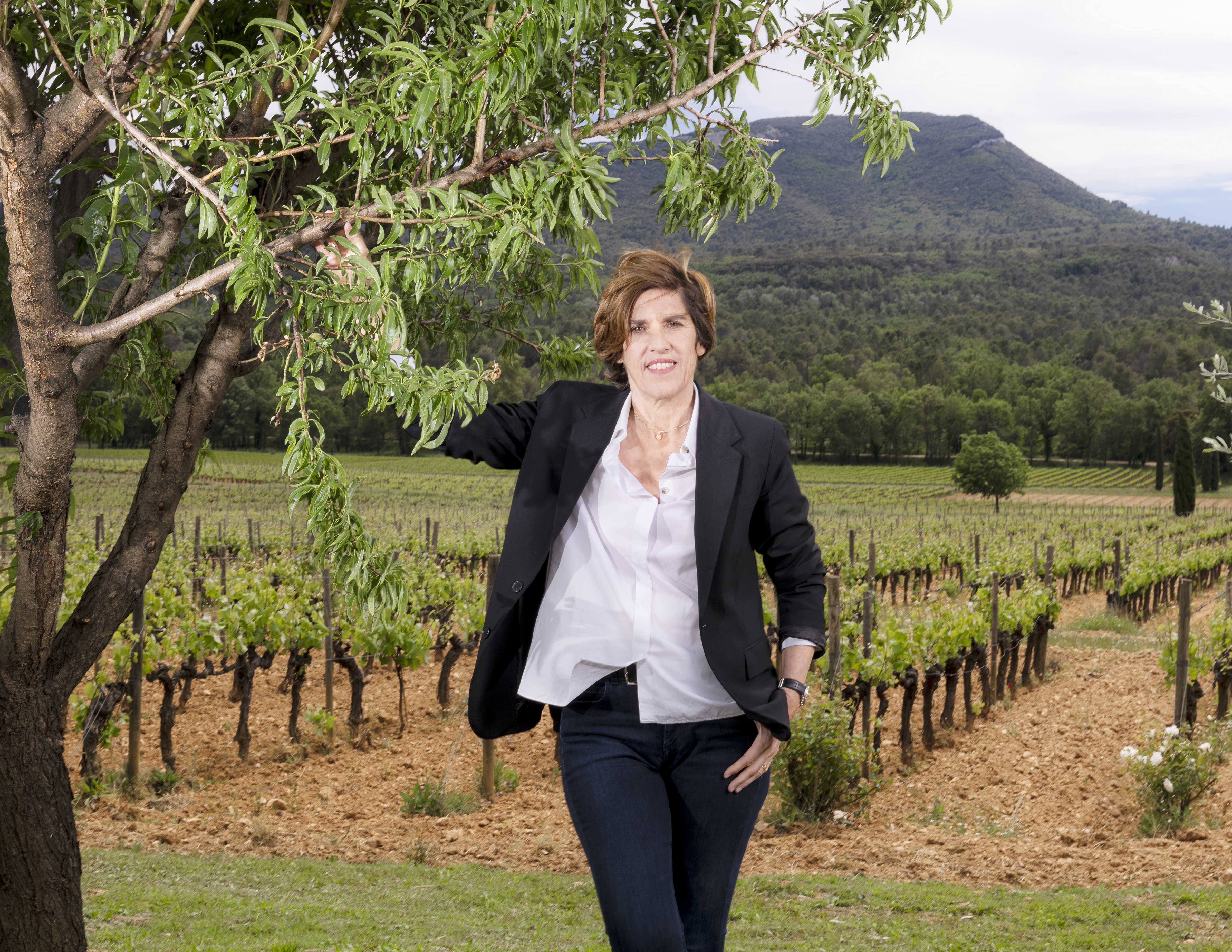
A pioneer of organic viticulture in Provence, Patricia Ortelli works her 12 hectares of vines with passion and respect for the environment, entirely eschewing weedkillers and insecticides. Château La Calisse benefits from an exceptional location, with its terroir of stony limestone soil where the vines flourish at an altitude of 500 metres, which protects them from sun damage. This terroir produces wines of extraordinary vivacity, ranging from a delicate white to a refined red by way of the palest of rosés.
Le Figaro Vin: How does it feel to be crowned a winemaking champion?
Patricia Ortelli: It gives me a feeling of intense happiness, in the light of all the love that, to this very day, I have devoted to my wines.
Have you been training for long?
Only for 30 years! It began when I raised my hand at an auction and ended up owning an abandoned vineyard. We had to start from scratch, completely replanting and rebuilding, levelling the ground and constructing the cellar. That was when I chose to go organic, becoming a trailblazer here in Provence. We started out on land that had never been touched by chemicals.
Who is your mentor?
My oenology professor, who was a big help, and very enthusiastic about this terroir, in the northern part of Provence. This was at a time when investors were focused on the south, in order to be close to the sea, whereas here we are 500 metres above sea-level.
Is wine a team sport?
Yes, one hundred per cent. In my teams we are all on equal terms and we face the day’s challenges together, especially at harvest. One of the joys of this job is that you never know what to expect. You have to stay on your toes. Everyone in my team wants to do their best.
What is the key to making a good wine? The terroir or the winemaker?
For me it’s the terroir, and it is important that the winemaker understands that his task is to respect what his terroir offers. That is my definition of a great winemaker. You have to choose the right path for the wine to express its full aromatic potential, and you have to be tuned in to your terroir to find the best approach.
To what do you owe your success?
To Nature with a capital “N”.
Is your family proud of you?
I am sure they are. They have all been involved in the project and are particularly pleased with the results.
Your favourite colour?
I produce a third of each colour, so I would say a blend of all three. There is a fascination in the specific skills and ways of working required by each of them. My first grapes were white, which went against the prevailing trend. As for the rosé, it is an extremely tricky wine to make, which gives you a great deal of joy when you get it right. Its finesse is remarkable.
The king of grape varieties?
I really think that there is an essential grape variety for each wine. For the whites that is Rolle, for the rosé, Grenache – it is the most suited to our high terroirs – and, for the reds, Syrah and Cabernet Sauvignon. Each grape variety has its own personality, its own challenges, they all have something about them, and you have to discover what makes each of them tick.
Your favourite wine?
The Cuvée Étoiles, but they all bring me a different pleasure. That can be when I am making them or when they are fully realised, just like with a work of art.
Your favourite vintage?
The one which provides the depth, fullness, and freshness that I look for. 2010 for example. Every vintage has a unique character which informs and shapes our wines. But it is certainly the case that the best years are those that are free from disease and frost.
If your wine was a person, who would it be?
It is the image of what nature has given us.
What are the best circumstances in which to taste your wine?
In large glasses, at the right temperature, obviously. But also, ideally, in circumstances conducive to producing a particular pleasure, a sense of joy.
Have you ever thought about chemically enhancing yourself, or your wine?
No product can make a bad grape better. From the moment you harvest fully ripened grapes by hand, through the night, and your grapes are of the finest quality, there is nothing to be gained by tampering with them. The only measures we take are temperature regulation and combinations from different plots, using micro-vinifications, which enable us to balance our wines through blending.
For what price would you be prepared to sell your estate?
There is significant pressure around us, but my estate is priceless. I could never sell it because I am entirely at one with it.
Who is your strongest competition in Provence?
The most formidable competition would be to find myself surrounded by a race to the bottom, considering the terroirs we have in our region. These days Provence has established a reputation for high-quality wine, and we have to maintain it.
What has been your most innovative strategy in the vineyard and in the cellar?
They are too many to count, all connected to my understanding of vines and wine. I use methods that are unique to me, but one of them underpins everything: paying attention. You have to pay careful attention to every aspect of winemaking; you can never relax. I try, every day, to see and understand my vines.
Who would be your ideal successor on the podium?
My son and my grandchildren.
Key findings from this year’s first regional report
In anticipation of this year’s en primeur releases, Wine Lister has published Part 1 of its annual in-depth Bordeaux Study. In collaboration with Wine-Searcher, our market overview examines the region’s price performance and comparative popularity progression, and examines the wines that have seen the greatest increase in Wine Lister Quality, Brand, and Economic scores over the last year. Drawing upon valuable insight from 48 leading trade survey respondents, the study also identifies which properties have benefited from a rise in trade confidence over the past year, and explores the key benefits of the en primeur system.
Please see our key findings below, or download the study digest in English: Bordeaux Study Digest Part 1 – 2023 ENG or in French: Bordeaux Study Digest – 2023 FR.
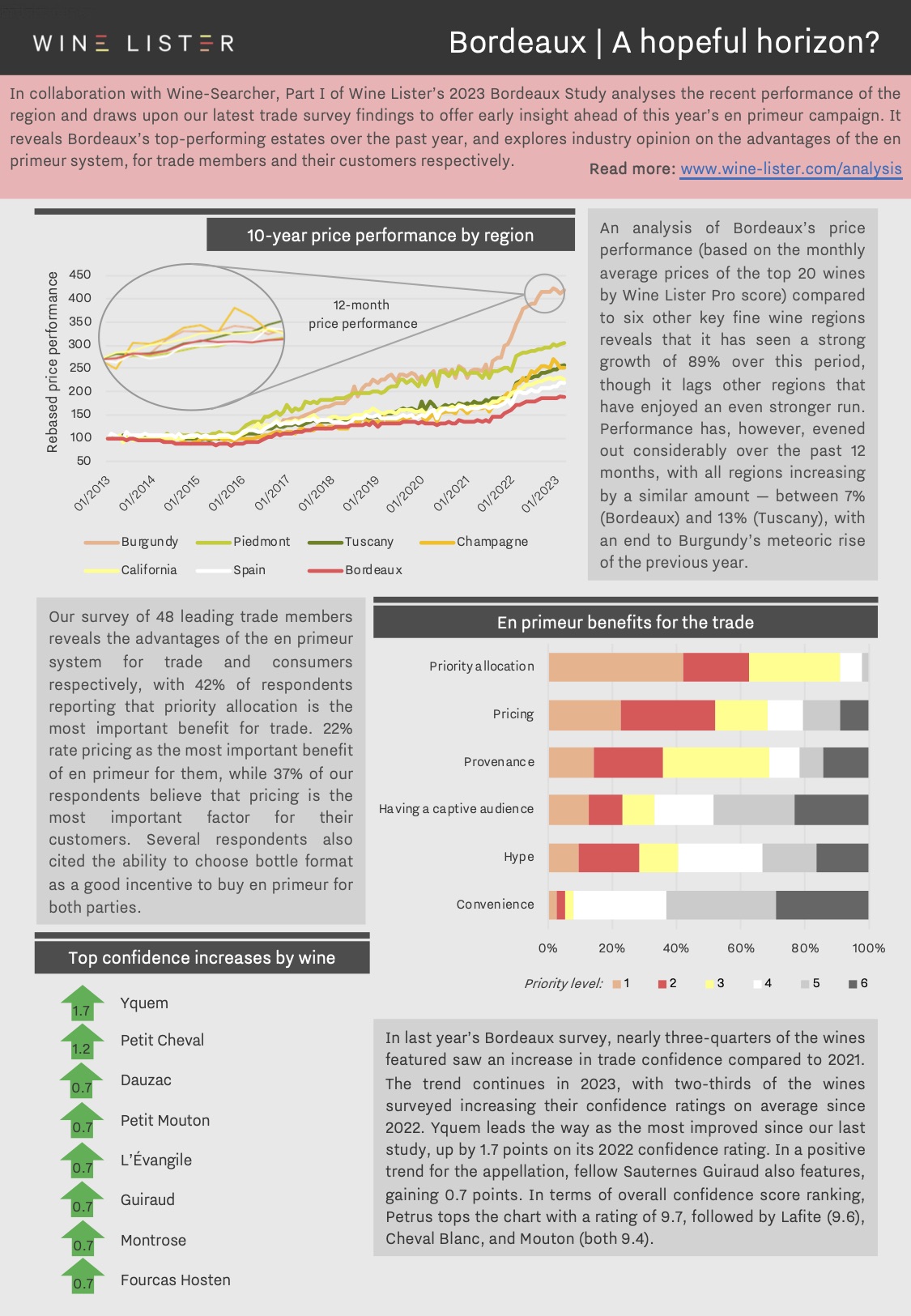
Owner and winemaker, in tandem with his sister Marie, of their family estate in Alsace: “We run on adrenaline”.
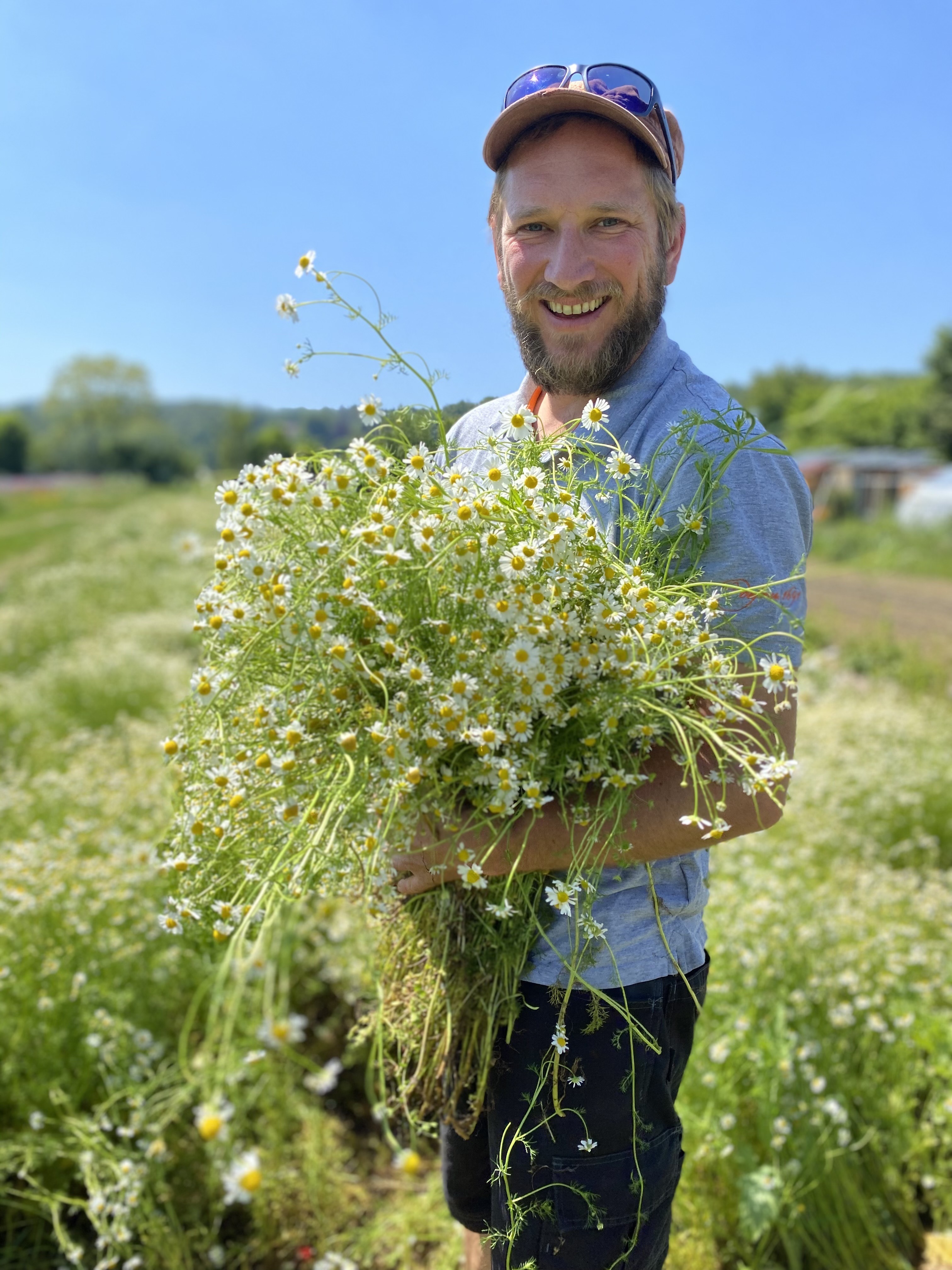
For the tenth interview in Le Figaro Vin’s series we pay our third visit to Alsace to meet Jean-Paul Zusslin, #41. He and his sister Marie work hand-in-hand with nature to create their great Alsace wines at Domaine Valentin Zusslin, founded in the late seventeenth century, at Orschwir, between Colmar and Mulhouse. The two siblings, 13th generation of a family of winemakers, work 13.5 hectares of vines, made up of nine grape varieties (Auxerrois, Chardonnay, Chasselas, Gewurztraminer, Muscat, Pinots Noir and Gris, Riesling, and Sylvaner). The estate’s three select terroirs, on the slopes of Bollenberg, Clos Liebenberg, and Grand Cru Pfingstberg, have been cultivated biodynamically since 1997, and produce exquisite, exciting, and elegant Alsace wines.
Le Figaro Vin: How does it feel to be crowned a winemaking champion?
Jean-Paul Zusslin: I am very happy with what we have been able to achieve since my sister and I joined forces on the family estate in 2000. The estate’s reputation has grown, and we make wholesome wines which are true to us and our environment.
Have you been training for long?
Since forever, I think. Vines, wines, wine-lovers, and restaurants have all been part of my daily life from a very young age, and I never tire of them!
Who is your mentor?
My partner, my children, my sister, my mother, all my kindred winemakers. Nature, too, is a good guide when you pay it proper attention.
Is wine a team sport?
You need plenty of team-mates and have to be in good shape to make a good wine. It is important to me that everyone should work well together, start the day with a smile, be generous-spirited, and want to work hard and conscientiously. That said, I am not hugely competitive! I am a big fan of live shows and I see us more as a theatre company with me as the director. The spectators are the tasters, the actors are the vines and our team, while the playwright who guides us is nature. We try to interpret nature as faithfully as possible.
What is the key to making a good wine? The terroir or the winemaker?
To make a good wine you have to be a good winemaker, but to make a great one you have to understand its terroir, its environment. That comes from experience, accumulated through successive vintages, from observation, from challenging yourself, and from humility.
To what do you owe your success?
To my family, to my partnership with my sister, to doing what I love, and to my perseverance. When I joined the family estate in 2000 my parents and grandparents gave me the freedom to experiment and do what I wanted, especially in the cellar. They gave me the same freedom in the vineyard, where I have experimented with herbal treatments, biodynamic sprays, the introduction of nesting-boxes…
Is your family proud of you?
Yes, I think they are, I certainly hope so! I am equally appreciative of everyone’s contribution.
Who is your biggest supporter?
My mother, but without a trace of objectivity!
Your favourite colour?
White in the morning, bubbles at midday, deep yellow for afternoon tea, and red in the evening.
The king of grape varieties?
It’s hard to say, to choose is to go without! I love all the wines that I make. It’s like asking me which is my favourite child. I love both of them unconditionally. That said, I am very partial to Riesling, for its multiple dimensions, its freshness, and its versatility in matching with food.
Your favourite wine?
I am very fond of Clos Liebenberg, it’s a unique spot, a haven of biodiversity where I love to spend time, and it produces magnificent still and sparkling wines.
Your favourite vintage?
I would go for 2015, the last vintage with my father. Each year brings a new experience, a new encounter. For every vintage we spring into action, give it everything we’ve got, and the fruits of our labour are there in the bottle. Every wine has a story to tell and reminds us of some climatic or some personal event.
If your wine was a person, who would it be?
I hope it is like me, on a good day! But it is also like our landscape through the passing seasons.
What are the best circumstances in which to taste your wine?
Wine is a social bond, a product that we share, therefore it has to be in good company, over a meal or in the living room.
Have you ever thought about chemically enhancing yourself, or your wine?
Yes, all the time. I try to stimulate both vine and wine with willpower and with attentive, loving care. I think it is important that both vine and wine know what we expect from them, what our intentions are. We have to give heart and soul for them, always be there for them, and stay tuned in. My vinifications are very minimalist and natural but require careful attention. As for my personal stimulants of choice, they are wine, in moderation I like to think, positive energy, and strong coffee…
For what price would you be prepared to sell your estate?
I have never considered that question. For 13 generations now my family has been making wine and looking after a bit of land. I would be very happy if I could pass that on to my children or to my sister’s children. It will be their choice, with no pressure from me. In any case, that’s for the future. I am not about to go anywhere.
Who is your strongest competition in Alsace?
No one. Instead, I see my winemaking colleagues as a source of inspiration. Everyone has their own style. When I’m at home I almost exclusively taste wines that are not my own. I try to understand what the winemaker sought to express and to discover what makes them tick. Faced with climate change we are going to have to form a collective front against numerous challenges, hence all the more reason to get on well.
Which competitions do you dread the most?
The harvest. We run on adrenaline. There are lots of team-mates to manage, you have to bring home the wines, and the days are long. By comparison the Mont Blanc ultra marathon is a walk in the park!
What is your greatest trophy?
When you start the day among the vines and you see a hare, a pheasant, a tit has come to say hello. Or perhaps when my children tell me “That’s really good!”. And when our customers tell me that my wine does them good.
What has been your most innovative strategy in the vineyard and in the cellar?
From the moment I came to the estate in 2000 I have been passionate about the natural cultivation of vines, observing and classifying the plants and small animals and insects that live in the vineyard. The estate had already been converted to biodynamic viticulture in 1997, on the initiative of my father, Jean-Marie Zusslin. I found that fascinating and delved deeply into alternative methods, especially the use of herbs. I acquired a lot of knowledge in this field about plants that produce essential oils. I have tried out different methods of extraction (infusion, decoction, and maceration) and potentisation. Currently I macerate the plants in alcohol to extract more of their essential elements. It’s an ongoing experiment, but the results so far are encouraging. The idea is also to become self-sufficient in caring for our vines, to strengthen them without stressing them.
In the cellar, for a number of years now, I have passed some fermenting wines over marcs from our great reds. That produces greater flavour, fewer tannins, and an unbelievable drinkability. We have called this wine Ophrys, after the orchids which grow on the sheltered part of Bollenberg hill.
Who would be your ideal successor on the podium?
I hope it will be my children, or my sister’s children. But only if they choose this freely and because they are passionate about it. I think that they respect what we are doing. We try pass on to them what excites us. But it’s not an issue for the time being. I very much want to try and make another 40 vintages!
Chef de caves of one of Champagne’s most distinguished independent houses: “The best things in life stay the same”.
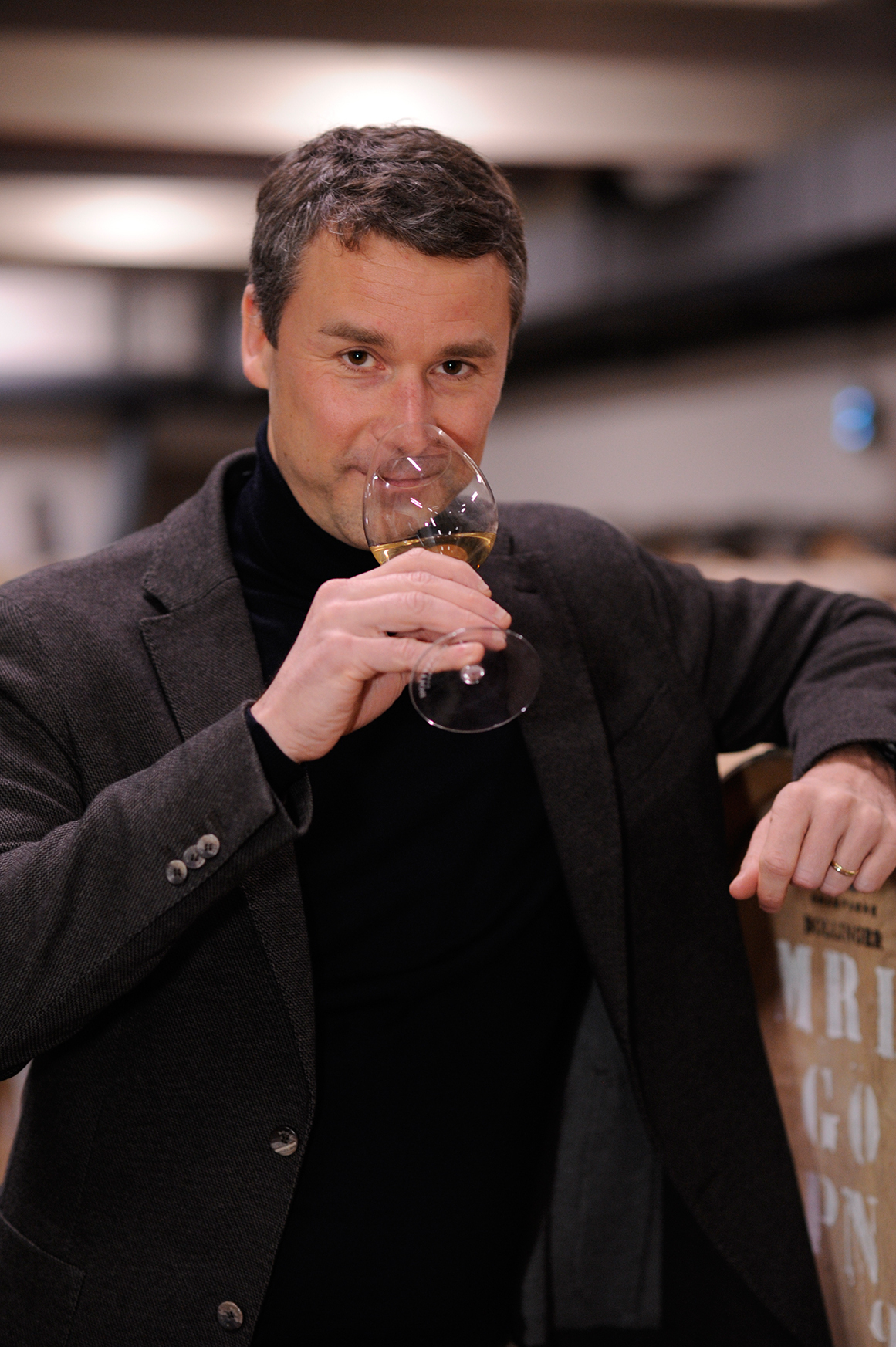
For the ninth in Le Figaro Vin’s series we take our second trip to Champagne to meet Denis Bunner, #42. His interview reveals a distinctive perspective on Champagne, one which combines respect for traditional values with his vision for the future.
A son of Alsace, oenologist Denis Bunner joined the Champagne house of Bollinger as deputy chef de caves in 2013. Ten years later he has replaced Gilles Descôtes as head winemaker, taking over the reins in a seamless transition. With a remarkable collection of over 700,000 reserve magnums, Bollinger enjoys its status as one of Champagne’s most iconic houses. It remains one of the pioneers of Coteaux Champenois with its renowned La Côte aux Enfants, while with every passing vintage it maintains the purity of an utterly inimitable style.
Le Figaro Vin: How does it feel to be crowned a winemaking champion?
Denis Bunner: It is a little disconcerting to be given that title because, as far as I am concerned, what matters most is team spirit. Although people tend to give all the credit to the chef de cave, the reality is that many separate elements combine to make a great champagne. My job is to bring out the power of the collective, to bring everyone together. I am also a musician and I love being the conductor. One should never forget that making champagne requires a great deal of time. Once you have finished with the composition there is a period when you have to let it rest, and then comes the disgorgement, another critical stage. It is important to recognise that we rely on expertise at every stage of vinification. Given that we carry out so much of the process by hand, the human contribution is crucial.
Have you been training for long?
From the cradle! My parents are winemakers in Alsace, and I have always been close to nature with an affinity for all living beings. I have been in Champagne for 20 years now, and I have been tasting two or three times a day since I was 20. I was fortunate to be a member of the Laboratory of Tasting and Sensory Analysis, and it is tasting that has mapped out my journey.
Who is your mentor?
It’s more a case of people who have inspired me. I have met a whole host of leading figures in Champagne who have enabled me to get where I am today. Among them was Gilles Descôtes, who has now left us (he died in January 2023, ed.). He is the person who really shaped me and showed me the way.
Is wine a team sport?
Yes, absolutely. With 4,000 barrels in our cellar we stick to very traditional working methods, which are highly dependent on human resources, and that’s what makes Bollinger a unique champagne.
What is the key to making a good wine? The terroir or the winemaker?
Both of them. To begin with we devote an enormous amount of care and attention to every stage, from the vineyard right through to the phases of fermentation. After the fermentations we are engaged in an exhaustive quest for perfection, with our decision to vinify in small containers. It has to be a co-operative effort between man and nature, and close observation is the key to everything.
To what do you owe your success?
My parents, who have passed on their predilection for a job well done. They are rigorous in their attention to detail, aesthetics, and craftsmanship. That’s the commitment you have to make, without knowing if and when you will reap the rewards. The best feeling is when a wine reaches the market, and you realise that all your hard work has paid off. Over and above the desire to achieve success, there is the prize for perseverance. All the more so in Champagne, which takes a long view of time in a world that moves much too fast.
Is your family proud of you?
My parents are too modest to say so. They are very pleased that I have chosen to stay in the sector, but they are souls of discretion and I think they prefer not to mention it.
Your favourite colour?
Blue in everyday life, the colour of the ocean and serenity. It’s a colour which grounds us and is important to me. As far as wine is concerned then it has to be white, because of my roots and my culture.
The king of grape varieties?
My favourite is Pinot Noir because it’s the predominant grape variety at Bollinger. I love its style and its personality. It is temperamental, and it’s a characteristic of ours to vinify it for whites in the same way as for reds. We still have a Côte aux Enfants 1934 in the cellar, a wine that has never been marketed, but which remains delicious. We are proud to have played an integral part in the culture of still wines in Champagne, and to have been followed by many other houses. Nowadays these wines have become more full-bodied, mature further, and make very fine reds. Which is paradoxical, since while we try to slow down climate change, we also get to benefit from some of its effects. Since 1999 we have also profited greatly from our technical collaboration with Domaine Chanson, and we maintain some very strong relationships with Burgundy.
Your favourite wine?
It’s a Pinot Noir, on a foundation of 2015, which is in our house’s DNA. It’s a wine from the heart which I made with Gilles before he left us: the PNVZ 2016.
Your favourite vintage?
1928, which is freighted with emotion, the greatest wine in our Wine Libraries, and, to my mind, the greatest Champagne vintage of all. It is packed with freshness and complexity. In 1938 Madame Bollinger wrote: “The 1928 is great and I predict a great future for it”. We found these words in the archives after tasting it, and we can say that history has proved her right. We have always used cork for this tirage. The easiest approach would have been to use a metal stopper, but sticking to the concept of using cork is a stamp of the house style.
If your wine was a person, who would it be?
Not necessarily a person. While I find it quite hard to pin down, I would compare it to the painting of a great master, to a landscape viewed from a passing train on which shifting planes are superimposed. Our champagne has a highly evolving style, you pass through successive stages of fresh, ripe, stewed, and dried fruits, before you enter the creamy dimension, followed by the salinity, the complexity…
What are the best circumstances in which to taste your wine?
My first answer is with friends. We remember some champagnes because we have shared them. In the first place, I love sharing. I was married last year and had a get-together with some childhood friends that I have known since I was four, where I was struck by something fundamental: the best things in life stay the same. My second answer, in my capacity as an oenologist, is in a blind tasting, for the fun of discovery and the experience of surprise.
Have you ever thought about chemically enhancing yourself, or your wine?
Not really, what would be the point? There is no call for it, it’s the direct opposite of what Bollinger is about. As Madame Bollinger already used to say, back in her day: “Less is more”.
Who is your strongest competition in Champagne?
As someone who cultivates a collaborative professional culture, I see the others as colleagues, not competitors, and there is strength in unity. If, on the other hand, I had to pick a role-model, I would choose winemakers who have been able to put love for the terroir back at the heart of things, the ones who have nurtured and reinvigorated the terroirs of Champagne. From our perspective, we are fully aligned with this approach to the terroir, and we are taking it forward, with the village-based expressions of PN, with the creation of La Côte aux Enfants in a champagne version, and with the whole range of our parcel-focused wines.
Who would be your ideal successor on the podium?
I think more in terms of taking a step forward than of taking one up or down. So I do not see myself as on a podium. And for the time being the question does not arise.











